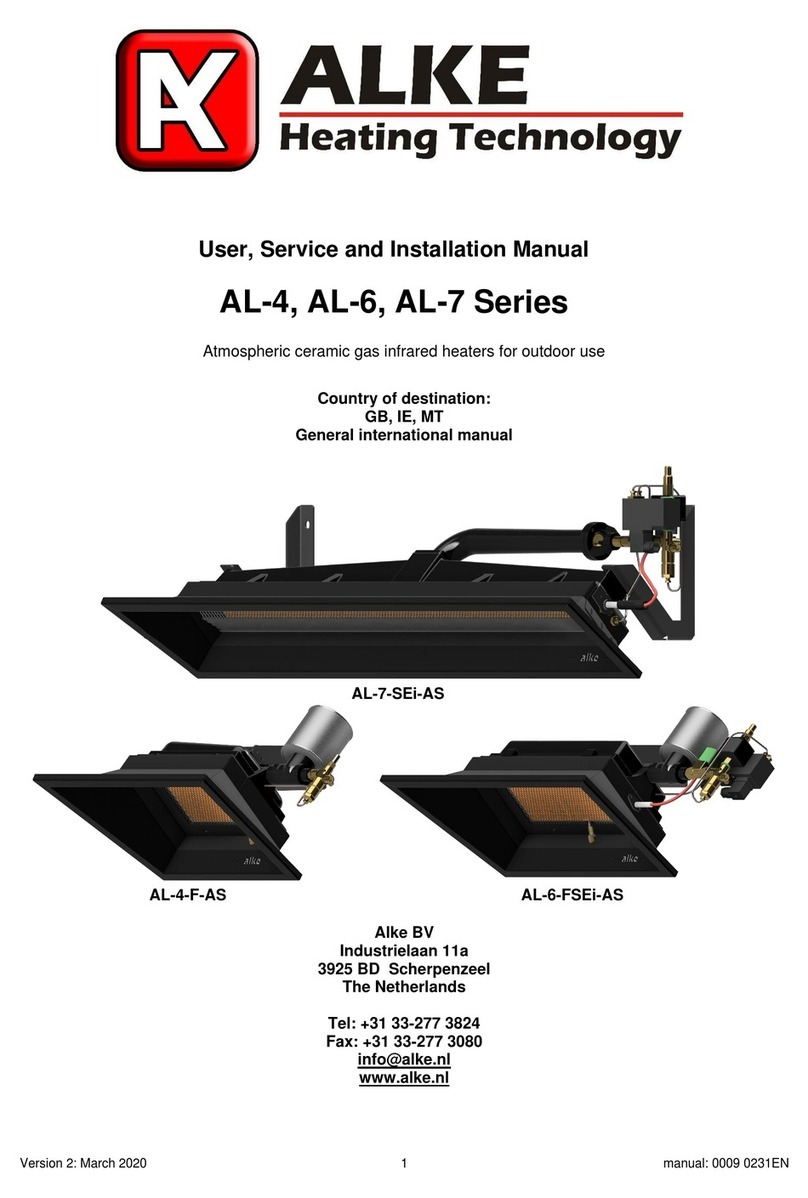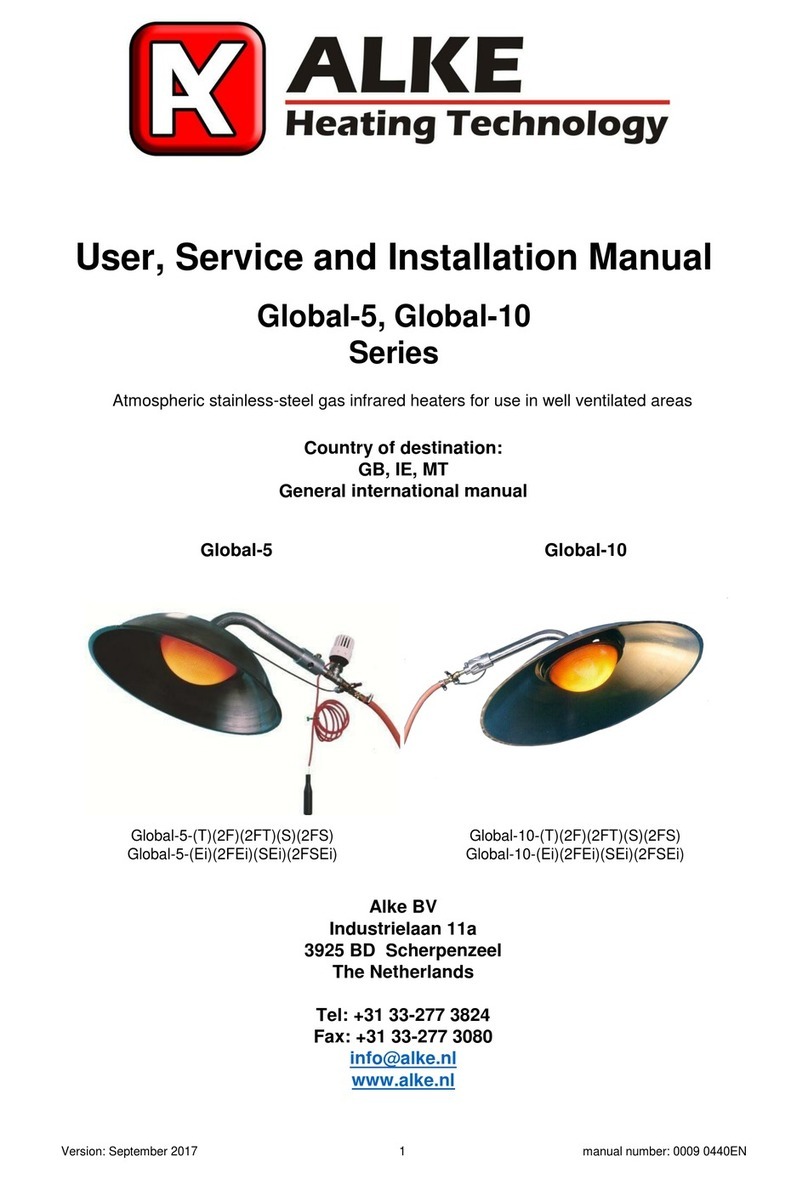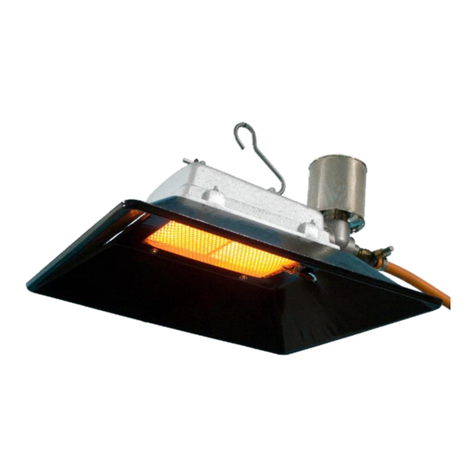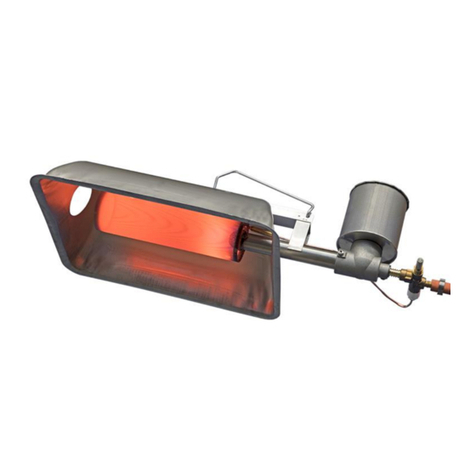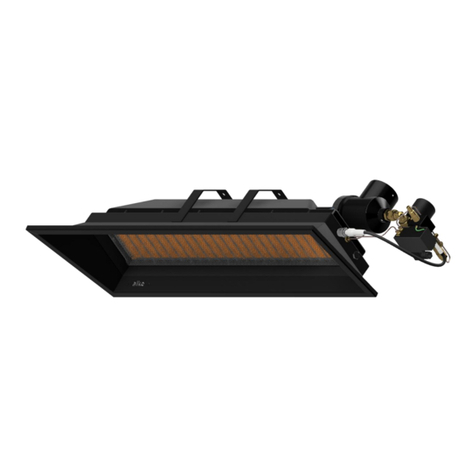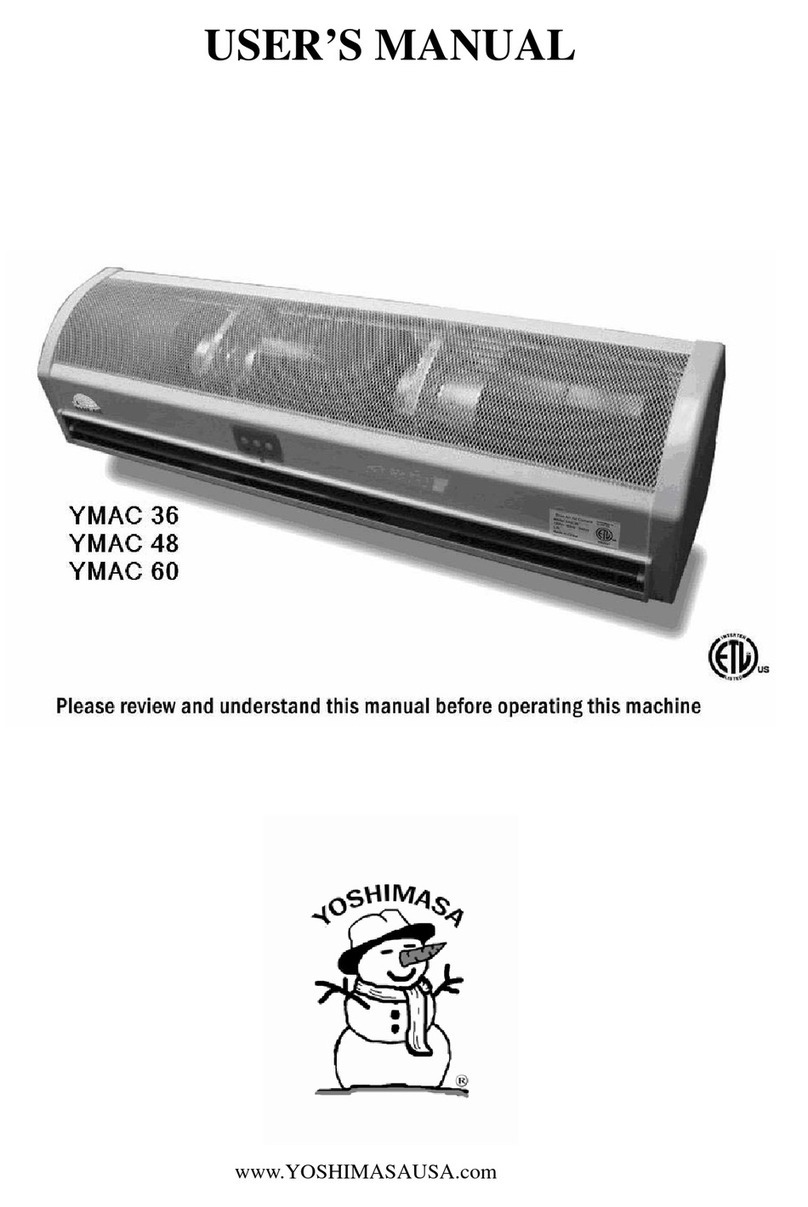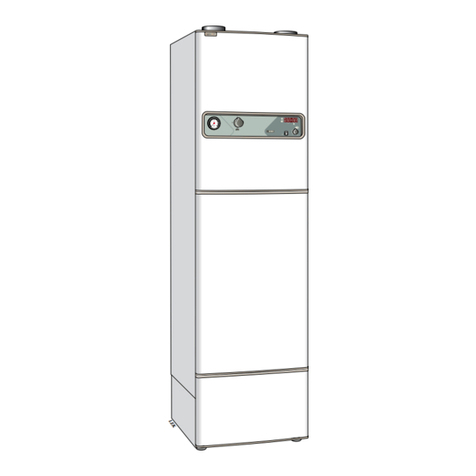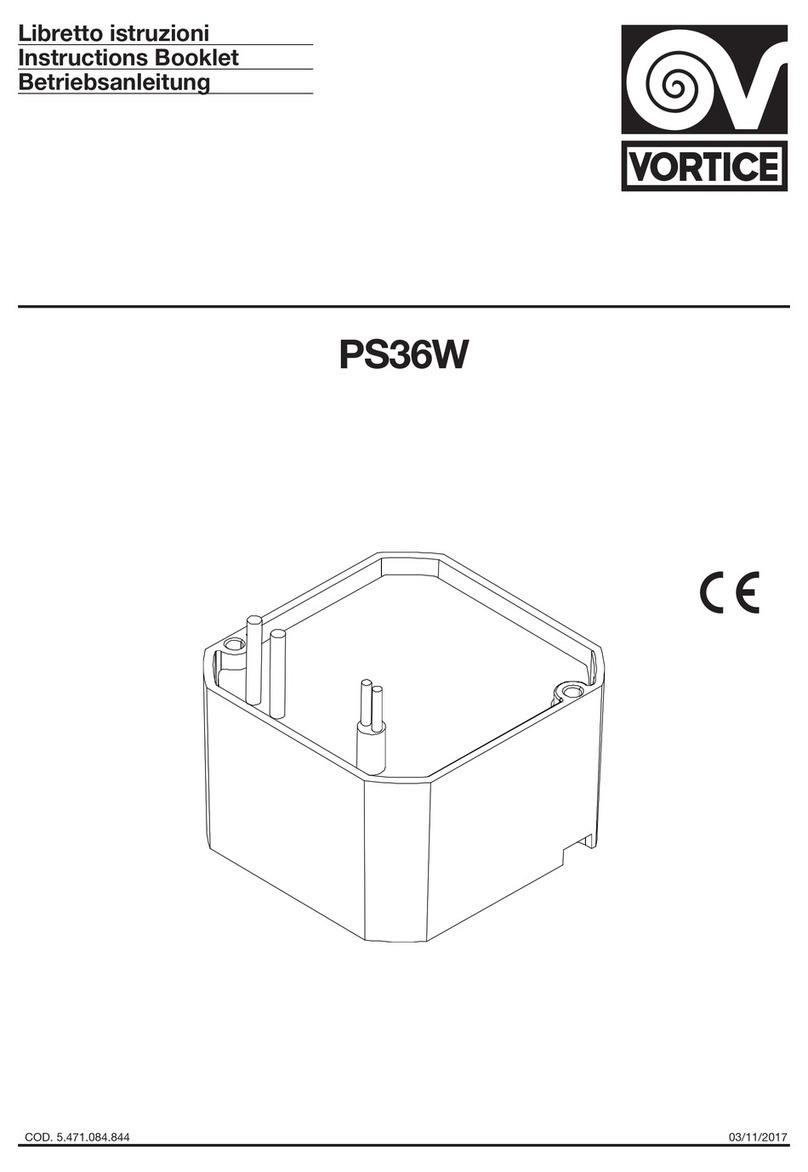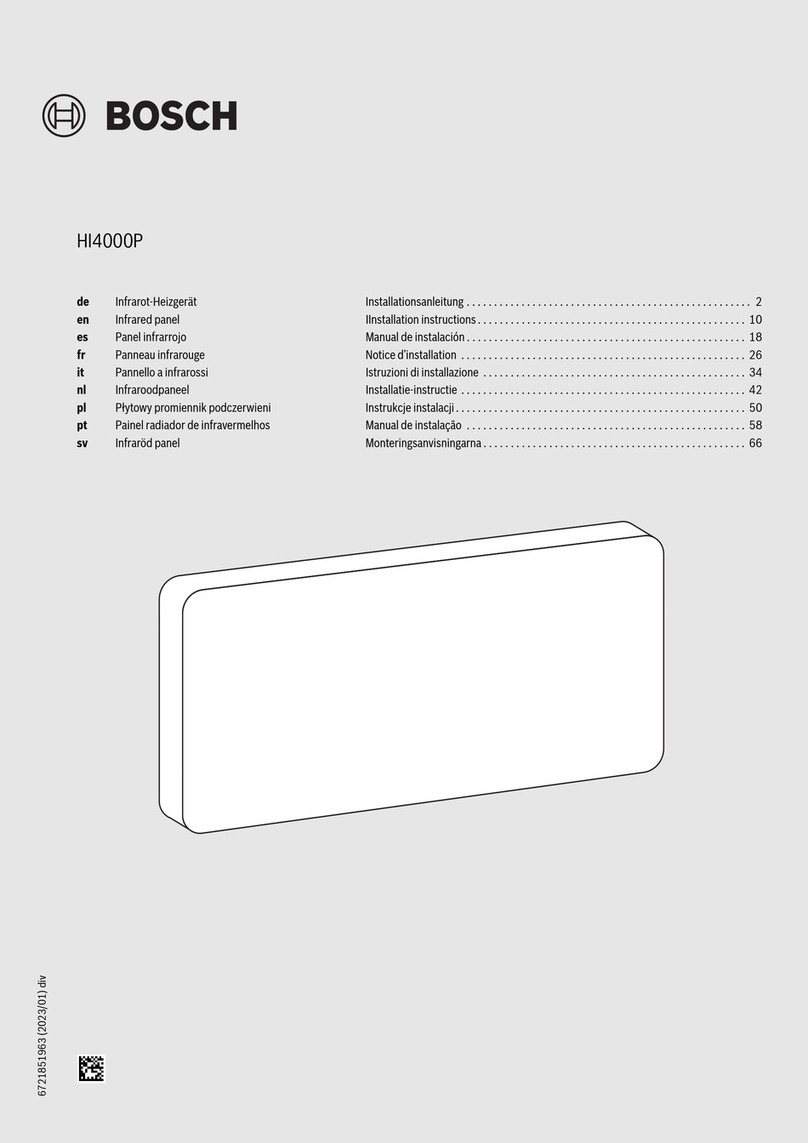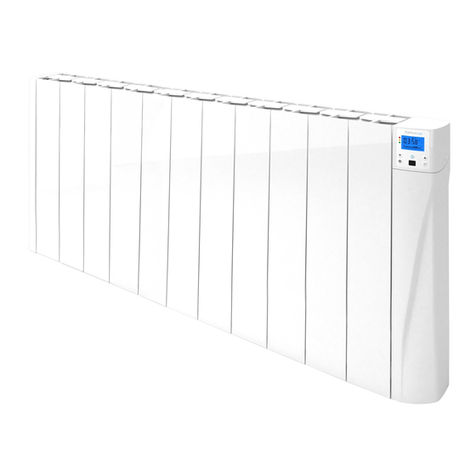Alke Global-8 Series Operating manual

Version: April 2016 1 manual number: 0009 0440EN
User and Installation Manual
Global-5, Global-8
Series
Atmospheric stainless steel gas infrared heaters for use in well ventilated areas
Global-5 Global-8
Global-5(..)TE Global-8(..)TE
Global-5(..)TETH Global-8(..)TETH
Global-5(..)TEMK Global-8(..)TEMK
Alke BV
Industrielaan 11a
3925 BD Scherpenzeel
The Netherlands
Tel: +31 33-277 3824
Fax: +31 33-277 3080 info@alke.nl
www.alke.nl

Version: April 2016 2 manual number: 0009 0440EN

Version: April 2016 3 manual number: 0009 0440EN
Warnings
Do:
•Read this manual carefully before installation and use and keep it for future reference. Make sure that
all daily users know the content of this manual.
•Install these heaters only in according with all applicable local and/or national regulations for
installation and ventilation of gas heaters.
•Use these heaters only in well ventilated environment.
•Before installation and use make sure that the required type of electricity, gas and gas pressure, as
mentioned on the data plate, is in accordance with the local situation.
•Store gas cylinders always in accordance with national and local regulations.
•Use only gas cylinders with a gas isolation valve or gas lines with a main gas valve at the beginning.
In case more than one heater is connected to a gas system, place also a gas tap directly before the
heaters. Close these taps when the heaters are not in use.
•Installation and maintenance shall only be done by competent and experienced installers.
•Make sure that during service, maintenance, cleaning and other work on the heaters, gas lines and
electricity are closed and the heaters are cooled down
•These heaters are intended for heating of animals, poultry, barns, workshops, local outside heating
projects and other similar heating purposes in agro or industrial environment.
•When gas is smelled or a leak is detected, directly close the gas supply and immediately take care for
good ventilation. Do not touch any electrical switch or do not create sparks in another way. Do not use
the system before the leaks are solved and the system is safe again. Consult an installer.
•If a heater is not safe to use anymore, remove it so that nobody accidentally operates the heater. Store
the heater in a safe place, mark that it cannot be used, and contact a service agent or gas installer to
solve the problem.
Do not:
•These heaters are not intended for domestic use or for use in habitable parts of buildings and houses.
•Never use LPG heaters below ground level or in cellars or basements.
•Never use these heaters in small rooms or insufficient ventilated areas. This can be dangerous and is
forbidden.
•Do not use these heaters for other purposes than room heating. Other use is not foreseen or evaluated
and maybe will be dangerous.
•Do not use another electricity, gas or gas pressure than what is written on the data plate.
•Never use these heaters in rooms or areas where combustible liquids or vapours are used or stored
or where there is a danger for dust explosions. These heaters are not ATEX approved.
•Never cover these heaters with cloths or other materials for drying purposes.
•Make sure that never gas lines, gas hoses, electric lines, etc. are mounted directly above the heaters
or are heated by these.
•Take care that gas hoses are not heated above 40 degrees Celsius.
•Never modify heaters. The manufacturer does not take any responsibility for modified heaters.
•Bad installation, wrong adjustment or incorrect maintenance can cause damage, accidents or even
personal injury or death.
•Do not touch, move, handle or service the heater when it is burning or in operation.

Version: April 2016 4 manual number: 0009 0440EN
General information
Model identification
The main identification of the different models is Global-5 and Global-8. These are independent
atmospheric stainless steel infrared heaters. Suffixes are used behind these model names to add
additional type information about the models (e.g. Global-5 CETETHi).
CE:
that particular type is CE approved
DS:
equipped with a dual dust filter connection
TE:
equipped with a thermocouple safety device
TH:
equipped with an independent thermostat and remote sensor (1,25 meter long)
THi:
equipped with an independent thermostat and integrated sensor
DI:
double injection system
MK:
solenoid valve for hi-low application on 24VAC or 230VAC
Packaging
Normally (depending model and order quantity) the heaters are packed per 1, 2 or 4 in a box. Always
check the heaters for transport damage directly after receiving them. Note that the heaters will be a bit
discoloured by temperature due to a 5 minutes quality check after manufacturing.
The heaters are pre-assembled. In some cases, if there is a risk for damaging during transport, the
thermocouple sensor is separated from the gas safety device. Re-assembly can be simply done by
screwing the M8 nut (18) of the sensor back on the safety device (17). Do not tighten too strong.
In most cases the reflector is delivered separately from the burner part to save on transport costs.
Reassembly is easy: move the burner tube through the hole in the reflector. Slide the reflector over the
tube till it rests on the upper plate of the burner. Secure the reflector with 4 nuts and washers and 2 eye
bolts.
The thermostat knob is always delivered separated from the thermostat valve.
1) Remove the protection cover from the thermostat valve.
2) Turn the knob on maximum temperature and push the knob on the valve.
3) Fix the knob by turning the large metal screw ring till it stops (at least 2 turns, hand tight).
For thermostats with a remote sensor only: bend the sensor line carefully (no sharp bends) to the
thermostat valve and secure the sensor line with a ty-rap around the red protection lining and the
thermocouple safety device (see picture). Note that the tubing is hollow, a sharp bend will close the
tubing and makes the sensor worthless. The chance of breaking the line at the entrance of the
thermostat knob is largely limited now.

Version: April 2016 5 manual number: 0009 0440EN
Installation
Place of installation
The heaters are intended for use in well ventilated areas only. Do not install the heaters in situations
that are not well ventilated. See also below for more ventilation information. Check also your local
regulations for the ventilation and room size requirements. The amount of heaters per building is
depending the type of building, the animals, the insulation, the climate and local wind conditions. Check
with your installer or distributor for a heat transmission calculation to determine the amount of heaters
needed.
Make sure that the place of installation is free of draft (less than 1 m/s). Too much draft will make the
flames unstable and will result in a lower infrared heat efficiency. It is advisable to install an alarm system
that reacts on temperature in case a temperature drop will cause damage. Find in the table below a
rough guideline for the installation height to start with. Adjust later on to the height based on your
personal preference and experience.
Operational Distances
Global-5
Global-8
To the ground
1,3 –1,6 m
1,7 –2,0 m
Safety distance to combustible materials
The heaters produce heat by radiation and by combustion gases. It is important to take the following
distances in account from the heaters to combustible materials. This is to avoid fire or overheating. Do
not use the heaters in situations where the distances to combustibles are smaller. Never store gases or
inflammable liquids or easy combustible materials in close vicinity of the heaters.
Safety Distances
Global-5
Global-8
to the ceiling
>75 cm
>75 cm
in front of the heater
>100 cm
>120 cm
to side walls
>90 cm
>110 cm
to the ground.
>100 cm
>140 cm
The minimum distance to non-combustible materials depends on the specific local situation. Keep in
mind that there must be sufficient free space left to vent the combustion gases away. Otherwise, they
will influence the combustion and proper function of the heater. On locations where the combustion
gases can vent away easily, a minimum of 25 cm to the ceiling is advisable. Note: Be aware that some
non-combustible materials can be subject to discolouring when they become too hot.
Warning: be careful with the use of heaters in places with storage of manure. Manure can contain large
amounts of methane and other inflammable gases.
Ventilation
A proper ventilation is extreme important for safe and convenient operation. Lack of ventilation can cause
production of carbon monoxide (very poisonous). Sufficient ventilation shall be guaranteed by a
monitored fan or by permanent, non-adjustable, ventilation openings. Consult EN13410 for more details.
Beside other important requirements this standard states in short that a 1,5 times room air replacement
per hour is sufficient in most situations. Also a maximum of 5W heat input per m3 room content is
considered to be safe. If this is not the case make sure that a minimum of 10m3/h air replacement per
1 kW heat input is guaranteed by means of fans or ventilation openings.
In case local requirements ask for more stringent ventilation, or when animals ask for more ventilation,
always follow the most stringent requirements. In case there are no requirements or standards for
ventilation in the country of installation, we advise to keep a minimum ventilation of 20m3/h per kW heat
input. Check regularly if fans are working properly and ventilation openings are not closed.
Installation
The heaters are intended for suspension only. The chain and S-hooks shall be galvanised or made of
stainless steel. Do not use the gas line, gas hose or electric lines for suspension purposes. Never use
rope or plastic mounting materials. Close all S-hooks when the heater is in correct position.
•Mount three short chains (of approx. 40 cm) with S-hooks to the three suspension eyes on the heater.
•Combine the ends of the three short chains together in the fourth S-hook and hang it on the main
chain. Mount the main chain to a rigid part of the construction of the building.

Version: April 2016 6 manual number: 0009 0440EN
•Place the chain ends in such a way at the fourth S-hook that the heater reflector makes an angle of
approximately 15 (DI=3) degrees to the horizontal. The gas safety device shall be at the lower end.
Never hang the heater horizontally while in that case the flue gases will influence a proper
combustion.
The gas safety device can handle a maximum temperature of 60 degrees Celsius. Be sure that the
heater is not mounted in such a way that this temperature will be reached (e.g. by other heaters in close
vicinity). Take into account the safety distances mentioned on page 3. After installation always check if
the gas type and gas pressure complies with the technical table and data plate information. Remove the
black end cap from the safety device.
The gas hose shall be hanging free and have a distance of minimal 1 meter from the ground. This to
make sure animals will not damage the hose. Connect the hose via an individual gas tap to the central
gas supply.
A guideline for placement of the sensor of the temperature regulation is 60 cm above the ground and
minimal 40 cm away from a heater. Use sensors with a black surface in case the regulation is based on
measuring the infrared temperature.
Gas line supply
In case a main gas line supplies the gas to the heaters, make sure that an authorised company in your
country, in accordance with the local rules and requirements, install the system. To avoid problems use
galvanised or copper tubing for the gas line. First make a calculation to determine the capacity of the
whole system and the diameters of the piping in each section. Use the common available calculation
methods as written in most gas installation standards. Contact an installer or the distributor in case this
calculation method is not available in your area. For data needed to calculate the dimensions of the gas
line, see the technical table on the last page.
The most common way to install a gas line is in the centre of the barn (at least 2 meter high) with every
3 to 5 meter a “T” or “cross” connection for gas supply to the heaters. Always mount a (easy reachable)
gas tap at the beginning of the gas hose to the heaters. This gas tap is needed to close the gas supply
to the burners to extinguish the flames. In addition, it makes it possible to remove the heaters after use
or to service the heaters safely. The gas inlet at the heater side is standard a 8 mm hose nipple (optional
a smooth hose nipple or a G1/8” right handed thread. Other connections are possible after consultation).
Always use approved gas sealant to close the gas connections.
Gas cylinder supply
The gas can also be supplied from LPG gas cylinders. The minimum size is a 11 kg cylinder or larger.
Before buying a cylinder make sure that the connections of the gas regulator and the gas valve of the
cylinder are of the same type. Check with your gas supplier for the correct size of gas regulator. Check
the technical table for the maximum gas consumption and gas pressure.

Version: April 2016 7 manual number: 0009 0440EN
Store the gas cylinders always on ground level in a well-ventilated place, preferably outside the room
where the heater is. In case the gas cylinder is placed in a cylinder housing, or cover, make sure that
there is enough ventilation as requested by the applicable regulations or standards. Never obstruct these
ventilation holes. Make sure that the gas cylinders are used in upright position only and are secured
again tipping over during use. Gas cylinders laying on their side will give liquid gas. This is very
dangerous and will give a fire ball when it reaches the heaters.
In case the gas cylinder is placed in the same room as the heater is, keep it at a safe distance from the
heater so it will not be over heated. Advisable is at least 2 meters. Make sure that the gas cylinder valve
can easily be reached to close the gas supply in an emergency situation. Pay special attention how to
change the gas cylinders in a safe way.
For the Global-5 a minimum of 1,5 gas cylinder (11 kg or larger) per heater is needed. For the Global-8
a minimum of 2 gas cylinders (11 kg or larger) per heater are needed for a guaranteed gas supply. For
a 45 kg gas cylinder a maximum of two Global-5 heaters is recommended. Having more heaters on the
gas cylinders as recommended above will give gas capacity problems, especially when it becomes
colder, due to limited vaporisation of the gas.
Biogas
While biogas can be corrosive under certain conditions it is important that the biogas is clean before
entrance to the appliances. The gas shall be dry and free from dust, oily and greasy particles to avoid
internal blockage of the appliances. Also halogens, chlorides, H2S and NH3 shall be removed to avoid
corrosion. The tolerance on biogas composition with CH4=60% is +/- 4% CH4.
Gas hose
In most installations the heaters are not connected directly to the gas system but a gas hose is used.
Keep the hoses always as short as possible, especially for natural gas and low pressure LPG. For high
pressure LPG the maximum length (concerning capacity issues) is 5 meter.
The gas hoses must be inspected frequently and must be changed within the prescribed intervals. Check
the hose at least every 6 weeks. Avoid twisting or stress of the gas hose. Twisting or stress will shorten
the live time of the gas hose. During inspection, check the hose for damage, splitting, ageing and
cracking. Pay special attention to the connections. If a defect is seen directly change the gas hose by a
new one of the same type. Keep the hoses clean from dirt, moisture and dust.
Some countries have regulations that gas hoses must be replaced every 2 or 3 years. Please check with
your gas supplier. Always use official approved gas hoses, suitable for the pressure concerning. Replace
a gas hose always by a type of the same length, internal diameter and equivalent quality. For safety
reasons: never use air hoses or water hoses, these are very dangerous for gas transportation and will
leak soon!
The gas hose shall always be connected to the heater with the help of hose clips. Not using hose clips
at both ends of the gas hose is very dangerous. Make sure that the gas hose never is heated above 40
degrees Celsius.
Changing gas cylinders
In case gas cylinders are used, changing or connecting gas cylinders must be done preferably outside,
or in a well-ventilated area, in a flame-free environment and away from other people.
•Check if there are no other operating heaters, other gas heaters, burning candles or people smoking
cigarettes in the area.
•Be sure that the valve on the gas cylinder is closed and the burner of the heater is extinguished.
•Unscrew the nut by which the gas regulator is connected to the gas cylinder valve. (Note that most
connections are with left-handed threads. They open in clockwise direction).
•Before connecting the (new) gas cylinder, first check if the rubber seals on the cylinder valve or on
the regulator connecting nut are fitted properly and able to fulfil its function and are not damaged or
worn. If the last case is true, do not use it and replace the seals first.
•After connecting the regulator firmly, open the cylinder valve and check with soapy water if the
connection is leak tight. If bubbles appear, the connection leaks. Do not use the heater unless the
system is sound.

Version: April 2016 8 manual number: 0009 0440EN
Soundness check
Before using a new built gas system, first make sure that the installer made a careful and extensive
check for gas leakage. After executing a pressure drop test to determine that there are not large leaks,
check every connection with soapy water or gas detection liquid with all gas valves open and with
maximum gas pressure. Pay special attention to the hose connections. Maintain maximum air ventilation
during the test. Repeat this check at least every year. This soundness check shall be done by a
competent installer only.
Gas leakage
When a gas leak is detected, immediately close the gas supply and disconnect electricity. Keep flames
away. Do not use the heater anymore. Contact an authorised gas technician, gas installer or gas service
agent to determine if the gas leakage can be repaired. Never try to do gas repairs by yourself. Do not
use the heater anymore until the problem is solved.

Version: April 2016 9 manual number: 0009 0440EN
Operation
New heaters
New heaters need a cleaning period before they are ready for operation. Turn the ventilation to maximum
position or place the heaters outside in the open air. Fire the heaters for at least two hours on full capacity
to burn-off oily and greasy remnants of the production. Make sure that after two hours all smoke and
smell is disappeared. The smoke and smell can be unhealthy, so keep animals and human beings away
till the heaters and the environment air is clean.
Ignition of the heater
Warning: after an heater is extinguished (intentionally or unintentionally) wait always for 3 minutes before
(re)ignition. This is a worldwide safety rule and intended to ventilate unburned gases away and to leave
enough time for the thermocouple device to close.
TE, TEMK, TETH and TETHi versions:
1) Open all gas taps (and turn the thermostat or gas pressure regulator on maximum, open the MK valve
by electricity).
2) Keep a flame of a BBQ lighter (or long match) in the ignition hole of the burner globe.
3) Press the knob of the gas safety device and wait for 10-25 seconds after ignition before releasing the
knob.
4) The burner will stay on now.
5) Repeat al steps again in case the burner directly extinguishes.
Heat regulation of the heater TE
version:
The heat input of this heater can only be changed by adjusting the pressure of the gas supply. Check
the gas supply pressure information on the data plate of the heater for the minimum and maximum
values. If only one pressure is mentioned, adjustment is not possible and only continuous operation or
on-off operation is allowed.
TEMK version:
Make sure that the gas supply pressure remains constant at the value indicated on the data plate. Adjust
the heat input between high and low by opening or closing the MK solenoid valve.
TETH, TETHi versions:
Make sure that the gas supply pressure remains constant at the value indicated on the data plate. Adjust
the heat input by setting the thermostat knob at the desired value. Note that the temperature on the
ground will be several degrees higher than at the sensor. So use the setting on the thermostat knob as
a rough guideline and always check the real temperature on the ground
Approx. Ground temp Temperature (THi)
Δ = 15 °C
* = 20 °C
1 = 22 °C
2 = 28 °C
3 = 33 °C
4 = 36 °C
5 = 38 °C
Extinguishing the heater
TE, TEMK, TETH and TETHi versions:
Close the gas tap or the central gas supply. The burner will extinguish now. The thermocouple safety
valve will close after 60 seconds.
Visual examination of the flame
Check after every ignition (and also during regular barn inspection) if a heater still burns correctly. The
flame shall remain always inside the outer burner globe. The burner globe shall be equal red/orange in
high firing position and having a blue flame. Some types will have in high fire position a dark ring on the

Version: April 2016 10 manual number: 0009 0440EN
globe. This will not give a problem and is created by cooling air around the flame. A little bit yellow tipping
or yellow glow in low fire is allowed.
A burner does not operate well in case there is a (green)-blue cloud inside the reflector and/or (green)
blue flame tongues are coming out the exhaust holes in the reflector. Soot deposit on the reflector and
yellow flames are also a sign of bad functioning and are not allowed. Cleaning will solve these problems
in most cases. When gas is used with a lot of butane instead of propane the centre of the outer globe
will become overheated. The centre will be white-yellow hot coloured; small flames of a few mm will
come through the perforation of the globe. The globe will burn through after some time. Take action
when this is noted.
In high fire position the flame makes a soft roaring noise. In case the burner makes a loud roaring noise
and the burner globe does not become equal red/orange, the inner burner globe is damaged and the
flame is burning inside the venturi tube (back firing). The venturi tube becomes very hot now behind the
venturi. Directly extinguish the heater and replace the damaged unit by a new one.
Birds and temperature
The following list gives a rough guideline about birds, days and temperature. Realize that this depends
on the conditions in the barn and the kind and the breed of the birds.
Age
Broilers
Turkeys
Guinea fowl
Ducks
(days)
Temp A
Temp B
Temp A
Temp B
Temp A
Temp B
Temp A
Temp B
1 - 3
38
28
40
28
40
28-30
38
28
3 - 7
35
28
37
28
40
28-30
35
27
7 - 14
32
28
34
26
40
28-30
32
25
14 - 21
29
28
31
25
40
28
32
24
21 - 28
-
22-28
30
24
38
28
29
23
28 - 35
-
20-23
27
23
35
28
-
18-22
35 - 42
-
18-23
-
18-22
32
27
-
-
42 - 49
-
17-21
-
-
-
26
-
-
42 - 84
-
-
-
-
-
26
-
-
Temp A = Required temperature under gas brooder in °C
Temp B = Required ambient temperature in °C
Game rearing
Global heaters are used a lot for game rearing. Especially for game rearing, due to the small cages and
active birds, pay a lot of attention to cleaning and ventilation. While the cages are small, the effect of
lack of ventilation and not cleaning will be directly the death of birds in a short time. While normally one
heater is used for one cage, we advise to add an independent temperature alarm system for those
situations where a temperature drop due to a (gas) failure will result in bird loss.

Version: April 2016 11 manual number: 0009 0440EN
Maintenance
General
The frequency of maintenance is strongly depending on the quality of the combustion air and the
intensity of use. When used in poultry houses, maintenance is advised every 6 weeks or by changing
the animals. By use in clean environment conditions, the maintenance period can be extended but not
longer than 6 months. In case heaters are not used for a long period, always do maintenance first before
using them again. Wear safety goggles during cleaning with compressed air.
Parts that are broken, or are not functioning well, must be replaced directly by identical ones of same
brand and type. Consult the dealer or manufacturer in case of doubt.
Order of maintenance
•First clean the heater and filters as described below by daily maintenance. Take the venturi out
during cleaning to remove dust directly behind it.
•Clean the reflector and other parts with water and mild detergent and a cloth or soft brush.
•Carefully inspect the outer and inner burner globes on damage, cracks and holes. Replace when
needed.
•Check the injector for obstructions. Remove obstructions by brushing them away and by using a pin
or drill to clean the injector hole. Make sure that the injector hole does not become wider by using a
pin or drill that is larger than the size stamped on the side of the injector.
•Pay special attention to the dual injection model. (See parts list for numbers). Clean the holes in
injector 44 very carefully. Gas soundness is achieved by a metal to metal connection with part 42.
So keep clean and inspect for damage and avoid making scratches on the contact surfaces of both
parts. Make sure that the small o-ring 47 (4 mm) is still in place in the seat behind the injector and
does not get lost during cleaning.
•Clean the inside of the gas safety device and injector with compressed air. Make sure that the
pressure of the compressed air is not larger than the 1,5x the pressure mentioned on the data plate
(300 till 1400 mbar). Otherwise the rubber seals inside the safety device will become damaged.
•Check the condition of the thermocouple sensor. Replace in case the tip is burnt-in already to avoid
unnecessary shut down later on. The tip of the thermocouple shall be 8 mm below the bottom plate
(27 or 28) of the burner.
•Check all gas carrying parts and connections for gas tightness with leak detection liquid or soapy
water according the procedure in the standards applicable in the local installation situation. Never
use a flame for soundness checks!
•In case a gas hose is used, check this carefully for cracks, wear and other signs of damage or
alteration. Replace it also when the maximum lifetime printed on the hose, or the maximum allowed
by local requirements, has been passed.
•Commission the heater after maintenance and check it carefully during first ignition, firing and
extinguishing.
In case the heaters need to be stored for a long time, make sure that no dust, spiders, etc. can enter the
heater. Use the carton packaging box to store the heater, or a plastic bag if the box is not available
anymore, and close this carefully.
Daily maintenance
In dusty or dirty environments check and clean a heater every day. In case a heater is not cleaned
internally the heat efficiency will drop and the lifetime of the inner and outer burner globe will become
shorter or they will be destroyed. Also there is a possibility that carbon monoxide (poisonous) will be
produced and soot deposit will occur. To keep the heater free of dust is important.
Dust filter (if applicable)
Dust filters must be check every day and cleaned in case needed. Remove a filter before cleaning. Dry
dust can be removed by tapping the filter softly against a solid surface like the sole of a shoe. The dust
will fall off easy now. In case the filter is still not clean, brush the surface gently with a brush or clean it
with compressed air from inside to the outside. In case the dust is greasy, clean the filter in warm water
with a bit detergent. Make sure that filters are dry before placing them back. Even with the use of a filter
still check the heater regularly inside while very fine dust still will pass the filter and pollute the heater
internally.
Advice: Lots of farmers use a second set of dust filters. They replace the dusty ones directly with the
clean ones and clean the filters outside the barn to avoid unneeded disturbance of the animals.

Version: April 2016 12 manual number: 0009 0440EN
Internal cleaning
The internal part of a heater can be cleaned with compressed air or with a tube brush. If needed do this
every day. First clean the outside of the burner globe. Then the inside of the venturi and burner tube
via the dust filter connection. Repeat this 3 times to be sure the dust is removed.
Water
Never wash the heater with water when it is operating or still hot. Do not clean the heater with steam or
chemicals or high pressure jets. The lifetime of the burner globes will go down in those cases. It is
allowed to wash the inside of the venturi and burner globes with low pressure (warm)water from a normal
hose (so not pressurized) to remove greasy dust. Be sure that the burner is completely dry before using
it again. Also make sure that the gas safety device and injector remains dry all the time.
High fire
The lifetime of infrared heaters in a dusty environment will be extended in case these heaters are
operated on high fire every 12 to 24 hours for minimal 15 minutes. This burns off dust in the burner that
accumulates during low-fire operation. This is only needed in case heaters operate on lower setting for
a longer period. When a barn computer is used for heating and ventilation, it will be easy to modify the
program to add a 15 minutes high fire operation every day. In case a mechanical thermostat TH is used
a solution can be to put the sensor for 15 minutes in a bucket with cold water during daily inspection of
the barn.

Version: April 2016 13 manual number: 0009 0440EN
Fault finding table
Trouble
Action
Burner does not light.
•Check if gas valve of the gas cylinder or gas line is open
•Check if gas cylinder is empty
•First ignition will take up to 60 or more seconds before gas is available
•Check if the injector is blocked
•Check if the gas pressure/gas quality is identical to the pressure
indicated on the data plate
Burner extinguishes after
lighting
•Keep button safety device pressed for a longer period (up till 25
seconds)
•Check if the thermocouple is connected properly to the gas safety
device
•Check if the thermocouple tip is 8mm under the bottom plate (27 or 28)
Thermocouple or magnetic coil of the safety device is broken.
•Gas pressure lower than minimum requested
•Heater not suspended at 15 degrees angle
Flames leave the
- confines of
the burner,
- or are
sooting, - or a blue
cloud is under the
reflector
•Gas pressure is too high. Check the gas pressure with the data
plate Check if the gas pressure regulator is broken.
•Wrong gas is used. Check data plate for the correct gas supply
•Venturi/air inlet is blocked/dirty
•Valve dual injection model DI is leaking
•Check the size of the venturi and injector with the table
•Not enough fresh air available due to mounting situation
•Air filter is dirty
•Heater not suspended at 15 degrees angle
•Small o-ring (47) DI is missing or leaking
The burner is only partly
glowing
•Wrong gas or pressure is used. Check data plate with the gas supply
•Check if the injector or venturi are blocked or dirty
•Check the injector and venture size with the table
•Check if pipe sizes or gas hoses have sufficient capacity
•Check the setting of the thermostat
•Valve dual injection model DI is blocked
The burner makes a lot
of noise after ignition or
after several minutes
•Wrong gas is used. Check data plate with the gas supply
•Check if the inner globe is broken or damaged so the flame burns
inside the venturi tube
The burner do not work
at minimum position
•Gas pressure is not correct. Check the gas pressure with the data plate
•Wrong gas is used. Check data plate for the correct gas supply
•Check the size of the venturi and injector with the table
•Sensor or wire thermostat TH is broken
•Thermostat TH valve adjusting mechanism is blocked
•By-pass hole thermostat TH or solenoid valve MK is blocked
•Injector (partly) blocked
•Centre hole dual injector DI is blocked
•Check if the thermocouple tip is 8mm under the bottom plate (27 or 28)
Heater will not attain the
desired temperature
•There is insufficient heat in the building for heat loss (i.e., not enough
brooders).
•The thermostat TH sensing bulb is incorrectly placed
•The thermostat TH is out of calibration or broken
•The solenoid valve MK is not functioning
•One of the two holes of the dual injector DI is blocked Injector
partly blocked

Version: April 2016 14 manual number: 0009 0440EN
Parts list
The parts list below is a combination list of both Global 5 and 8 models. Most parts of both models are
identical. Parts that differ are specified with the Global model identification. Consult the data plate to
determine the model you have before using this list.
No. Part # Description
No.
Part #
Description
1
08896000
Venturi tube
28
02222000
Bottom plate SS (Global 5)
2
013080xx
Venturi 30x75-consult factory
29
08892000
Distance tubes SS
3
07426010
Nut M5 SS
30
07073000
Blind rivet nut M4
4
07850000
Eye bolt M5x15x8 SS
31
02226000
Top plate SS (Global 8)
5
01813000
Connection piece complete (Global 8)
32
02223000
Top plate SS (Global 5)
6
01811000
Connection piece complete (Global 5)
33
07781000
Toothed spring washer M5
7
07135000
Screw M5x10 SS
34
07426010
Nut M5 SS
8
01161xxx
Injector M8x0,75-consult factory
35
01381000
Nut M8x1
9
01301000
Injector holder
36
07845000
Eye bolt M4x15x6
10
07005000
Distance ring
37
07401000
Nut M4
11
01405000
Reducing ring ⅜”x ⅛” (TH)
38
07800000
Washer 4,3 mm
12
0092xxxx
Thermostat assembly-consult factory (TH)
39
02530000
Filter small 80x90mm
13
01429000
Reducing nipple ⅛” x ⅜” (TH)
39a
02533000
Filter large 80x180mm
14
07000000
End cap, black PVC
40
01803000
Double filter connection piece (DS)
15
01327000
Hose nipple 8 mm
41
01360000
Nipple ⅛”x ⅛” (DI)
15a
01328000
Hose nipple 8 mm, smooth
42
01812021
Insert part connection piece (DI)
16
00101000
Gas safety device ⅛”
43
07135005
Screw M5x12 SS (DI)
16a
00106000
Gas safety device with hose nipple
44
0128601x
Dual Injector-consult factory (DI)
17
00158000
Safety device nut M8x1
45
01812020
Housing connection piece (DI)
18
00202000
Thermocouple M8x450mm Alu
46
01368xxx
Valve assembly (DI)-consult factory
19
02354000
Reflector SS (Global 5)
47
81113017
o-ring 2x1mm (DI)
20
02355000
Reflector SS (Global 8)
48
81113013
o-ring 7,5x1,5mm (DI)
21
07065000
Blind rivet bolt M4
49
01400000
Reducing ring ¼”x⅛” (MK)
22
02527000
Burner globe large SS (Global 5)
50
01421000
Reducing nipple ⅛”x¼” (MK)
23
02525000
Burner globe large SS (Global 8)
51
03028000
Electric connector complete (MK)
24
07734000
Bolt M5x30 SS
52
00612000
MK solenoid valve 24VAC complete (MK)
25
02224000
Mounting ring SS
53
00611000
MK solenoid valve 230VAC complete (MK)
26
02524000
Burner globe small SS (Global 5,8)
54
00698010
MK coil 24VAC (MK)
27
02225000
Bottom plate SS (Global 8)
55
00698000
MK coil 230VAC (MK)
12005000
Burner replacement kit Global 5
(set of parts: 1, 21, 23, 24, 25, 26, 28, 29,
30, 32, 33, 34)
12006000
Burner replacement kit Global 8
(set of parts: 1, 21, 22, 24, 25, 26, 27, 29,
30, 31, 33, 34)


Technical table
Category
Gas
Maximum
Supply
pressure
Minimum
Supply
pressure **
Maximum
Heat Input
Minimum
Heat Input
Gas
consumption
Main
Injector
By-pass
hole
**
Venturi
Ring
Injector
Holder
Weight
Remarks
(-) (-)*
(mbar)
(mbar) (kW Hs)
(kW Hs)
(g/h or m3/h)
(mm)
(mm)
(mm)
(-)
(kg)
(-)
Global-5 series
I2H, I2E
G20
300
10
5,2
0,87
0,50 m3/h
0,77
-
13
0
2,2
I2H, I2E
G20
300
20
4,8
0,63
0,46 m3/h
0,60/0,59
0,31
12
-
2,3
DI
I3P
G31
300
20
4,6
0,60
330 g/h
0,50/0,47
0,24
18
-
2,3
DI
I3P
G31
1000
20
5,7
0,80
410 g/h
0,52
0,25
10
4
2,2
I3P
G31
1400
20
4,6
0,55
330 g/h
0,45
0,25
11
4
2,2
(>1200 m)
I3P
G31
1400
20
5,6
0,65
400 g/h
0,47
0,22
10
4
2,2
0063AT3389
I3P
G31
1400
20
5,6
0,65
400 g/h
0,47
0,22
12
4
2,2
DS
I3B/P
G30
1000
10
5,1
0,50
370 g/h
0,47
-
11
4
2,2
Biogas
BG
100
5
5,1
0,90
0,74 m3/h
1,55
0,75
10,5
4
2,2
Global-8 series
I2H, I2E
G20
300
50
8,8
3,6
0,84 m3/h
1,05
-
15
6
3,7
I2H, I2E
G20
1400
20
8,5
1,0
0,81 m3/h
0,70
-
10
4
3,7
(air=4x17mm)
I3P
G31
300
100
8,0
4,6
570 g/h
0,83
-
16
7
3,7
I3P
G31
1400
20
8,7
1,0
640 g/h
0,59
0,28
13
6
3,8
DS
I3P
G31
1400
20
8,7
1,0
640 g/h
0,62
0,28
13
6
3,8
0063AT3389
I3P
G31
1400
20
8,7
1,0
620 g/h
0,58
0,28
14
6
3,8
(>1200 m)
I3P
G31
2000
20
8,8
0,8(TH=1,4)
630 g/h
0,53
0,22
12
6
3,8
I3P
G31
2000
20
8,8
0,8(TH=1,4)
630 g/h
0,53
-
13
6
3,8
DS
* G31 = propane, G20 = natural gas (100% methane), BG = 60%CH4, 40%CO2
** In case the heater is equipped with a bypass hole (TH, THi or MK version) the heater shall be operated on maximum supply pressure only. See also the
pressure information on the data plate
Electric ratings solenoid valve MK: 24VAC - 50/60Hz - 1Amp - 24VA - IP44
230VAC - 50/60Hz - 0,13Amp - 24VA - IP44
Declaration of conformity
We, Alke B.V., located in Scherpenzeel, The Netherlands, hereby declare that the Global 5 and 8 series, marked on their dataplates with CE and with CE
approval/production supervision by Kiwa Gastec (number 0063) are in compliance with the following EU directive: - Directive on appliances burning gaseous
fuels (2009/142/EC) (ex 90/396/EEC)
Scherpenzeel, 01-01-2010
Adri van Alphen Derk Jan Keurhorst
Managing Director Managing Director
This manual suits for next models
1
Table of contents
Other Alke Heater manuals
Popular Heater manuals by other brands
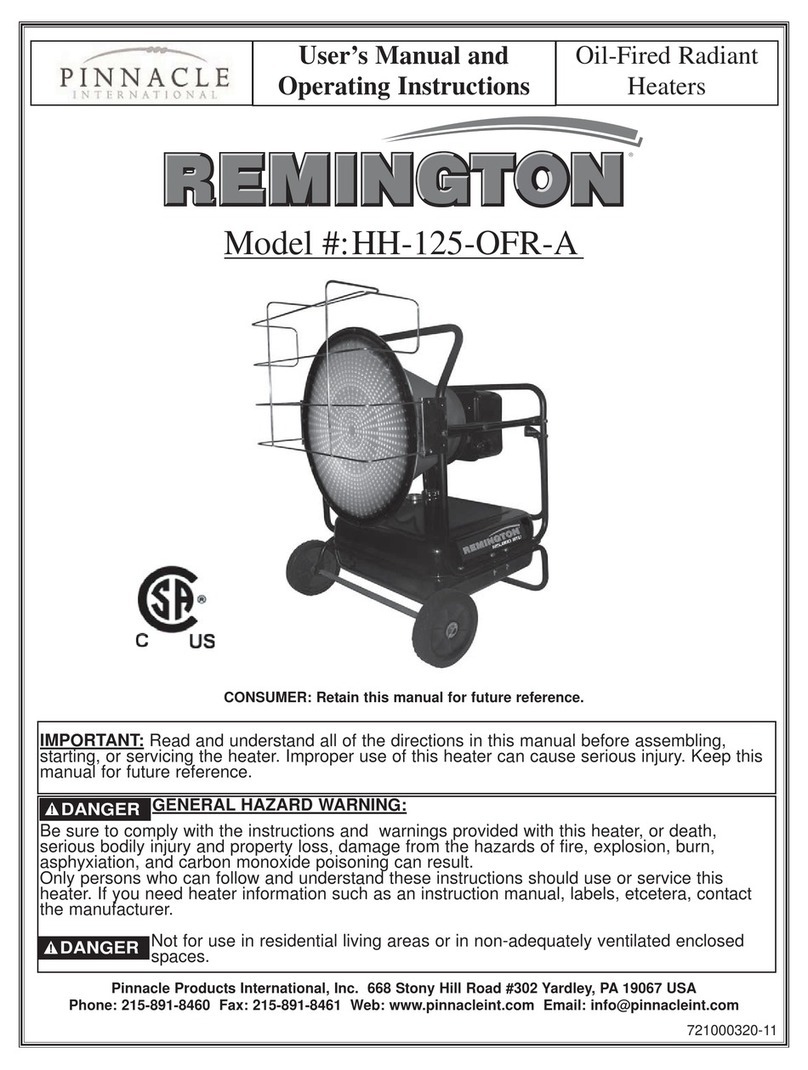
Pinnacle International
Pinnacle International HH-125-OFR-A User's manual and operating instructions
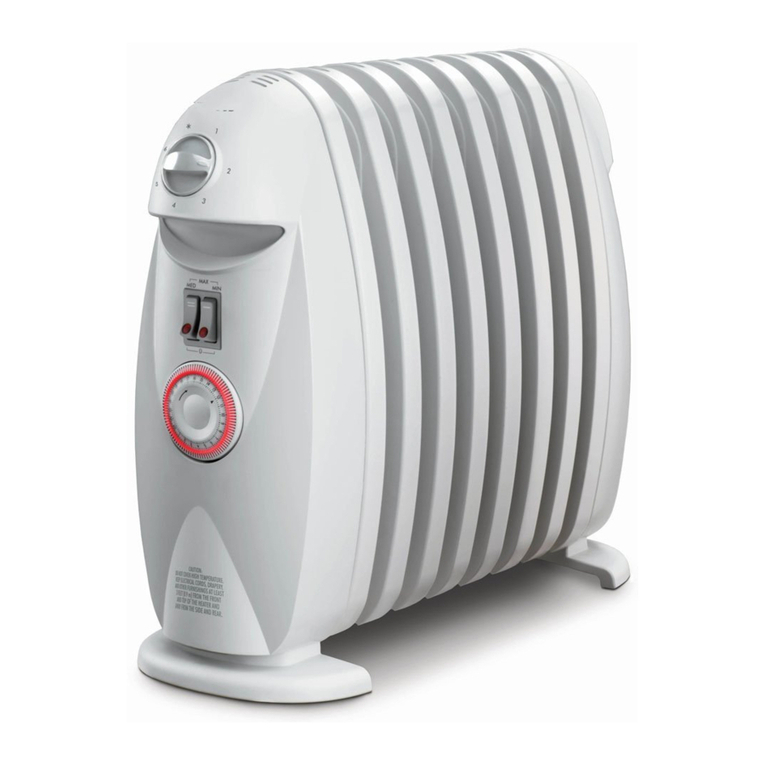
DeLonghi
DeLonghi TRN0812T user manual
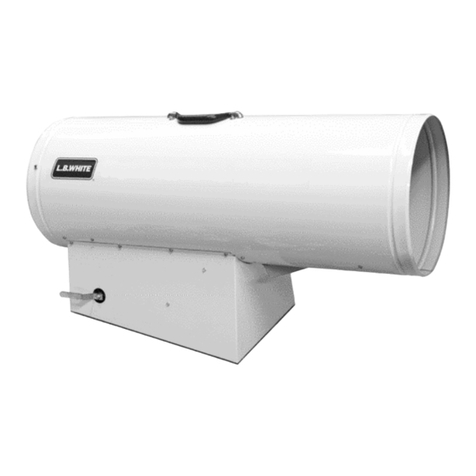
L.B. White
L.B. White Tradesman CP400 Owner's manual and instructions
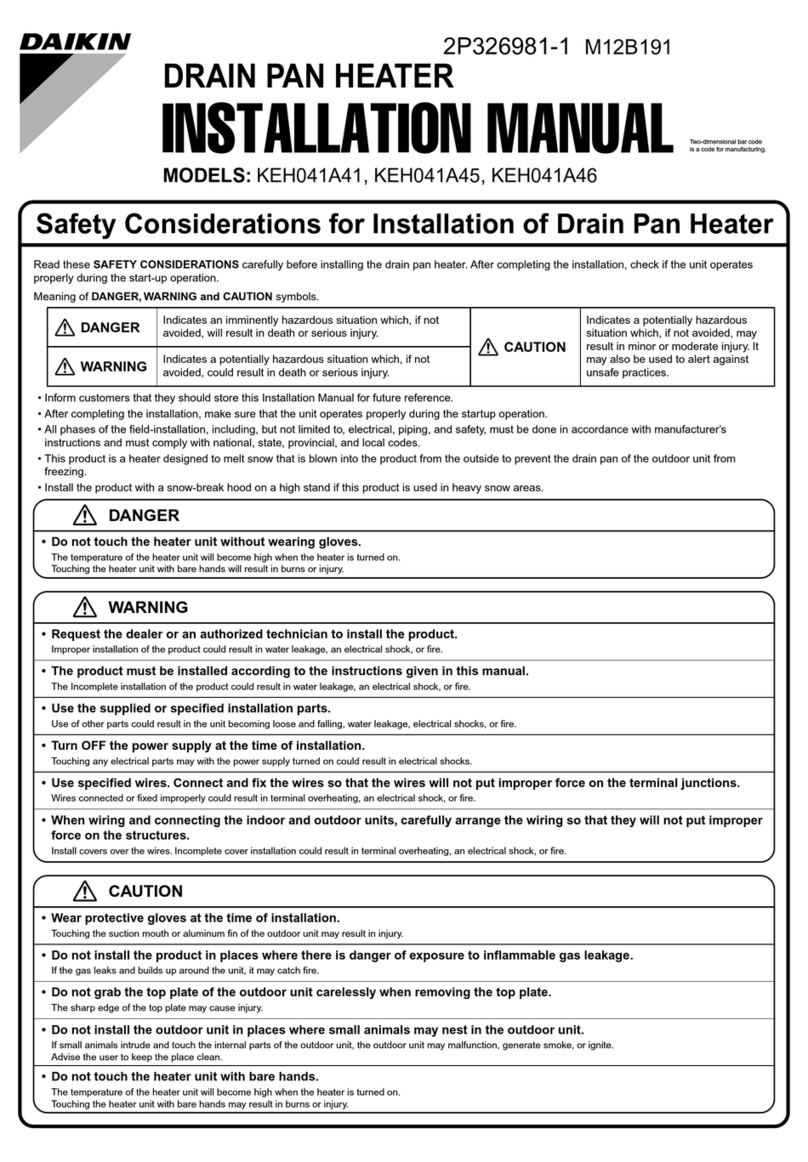
Daikin
Daikin KEH041A41 installation manual
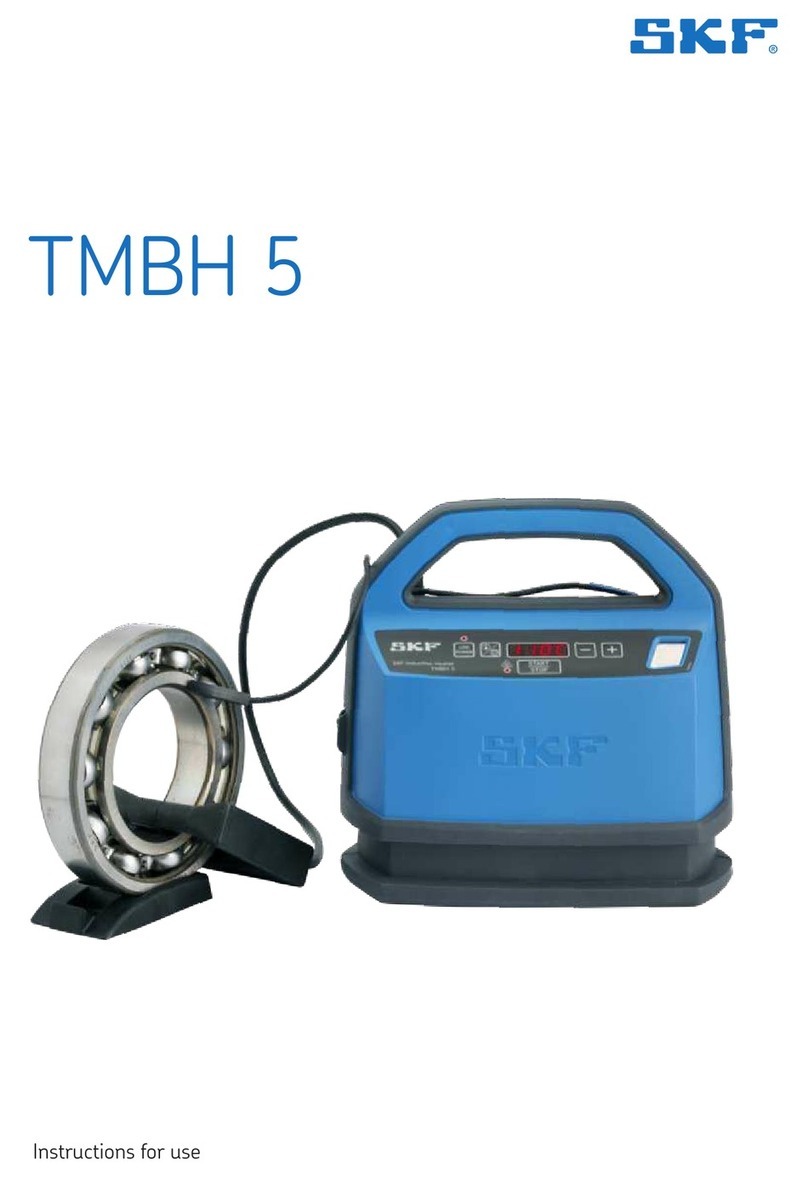
SKF
SKF TMBH 5 Instructions for use
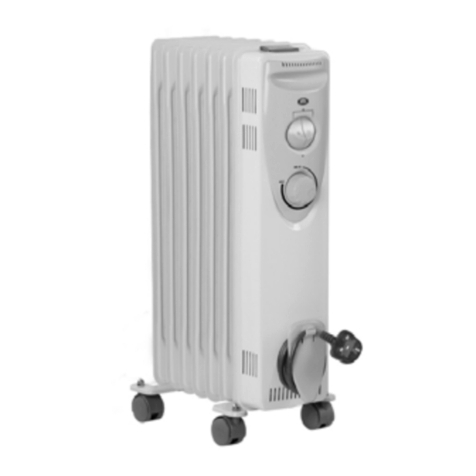
Prem-I-Air
Prem-I-Air C307 instruction manual
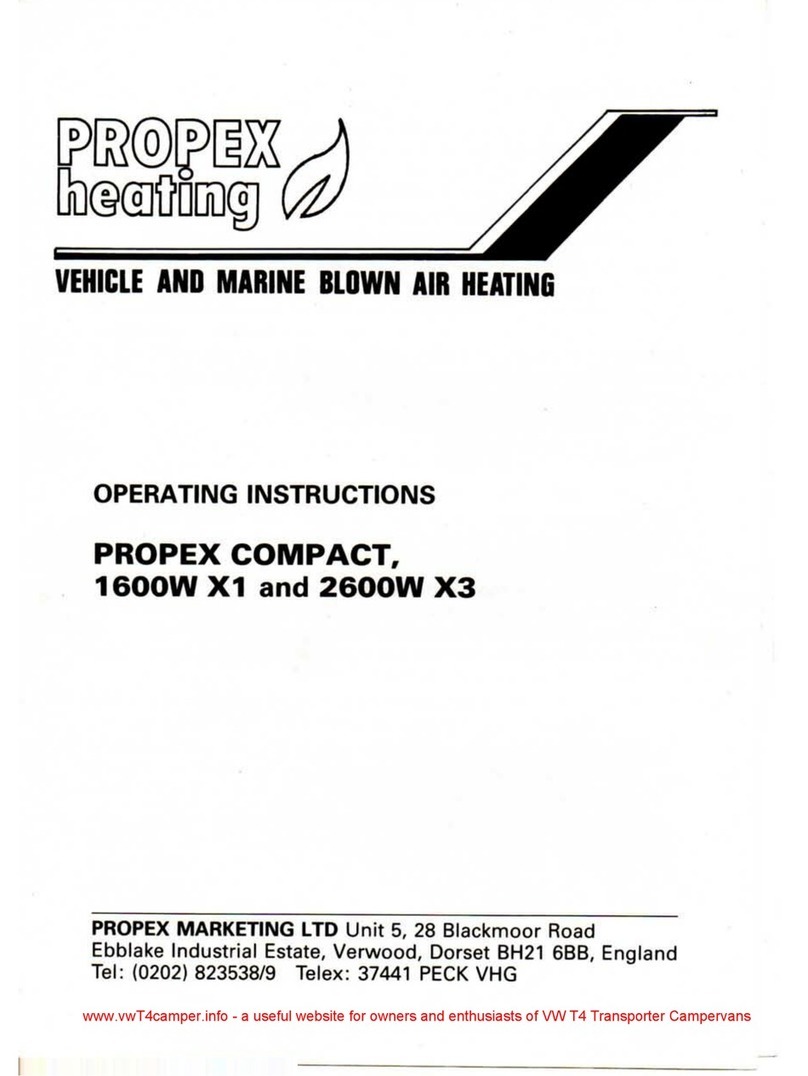
Propex
Propex COMPACT 1600W X1 operating instructions

Black & Decker
Black & Decker HX230 Original instructions
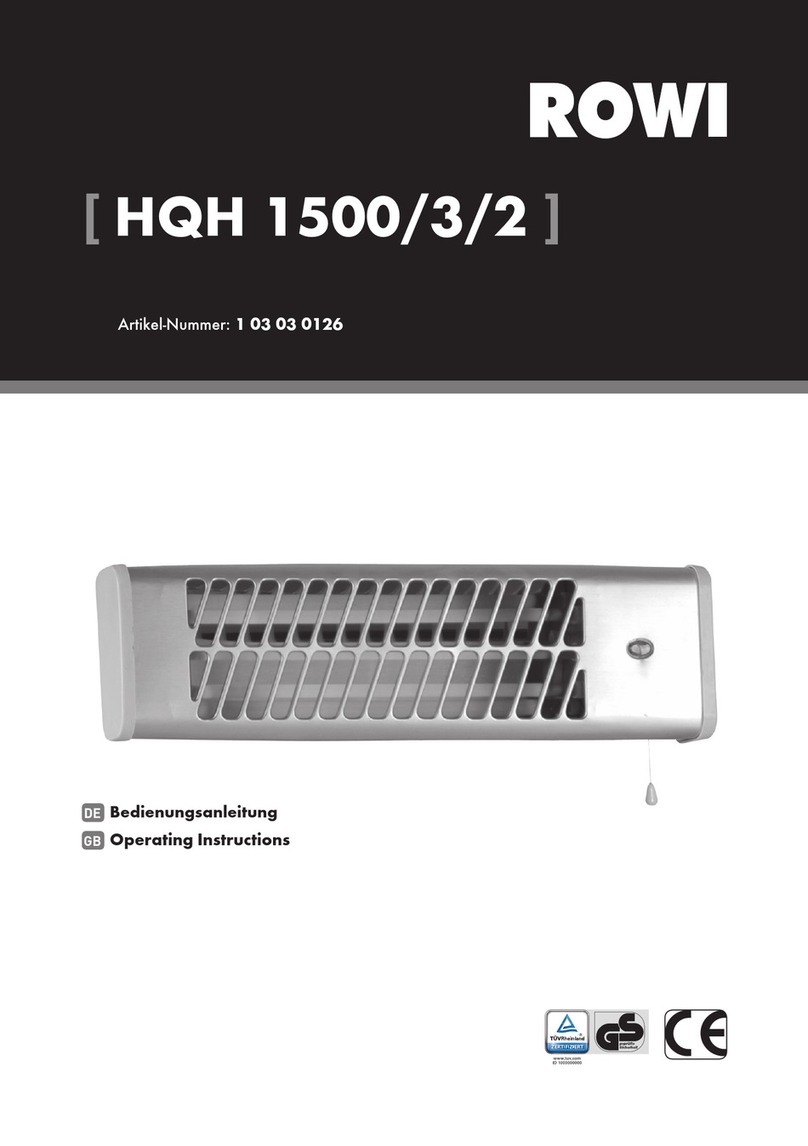
Rowi
Rowi HQH 1500/3/2 operating instructions
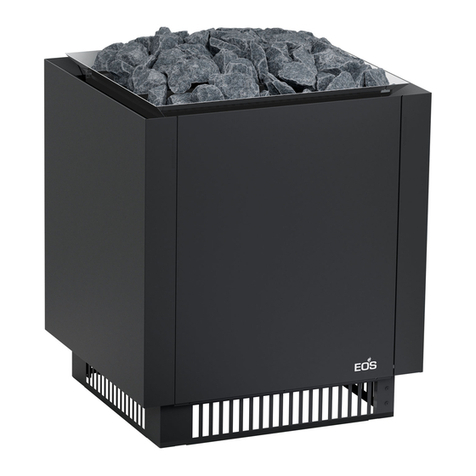
EOS
EOS Mega S HD Installation and operating instructions
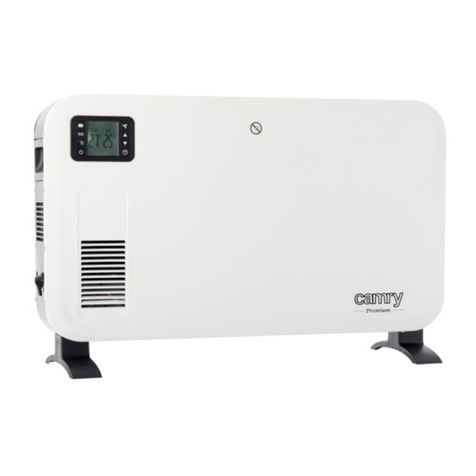
camry
camry Premium CR 7724 user manual
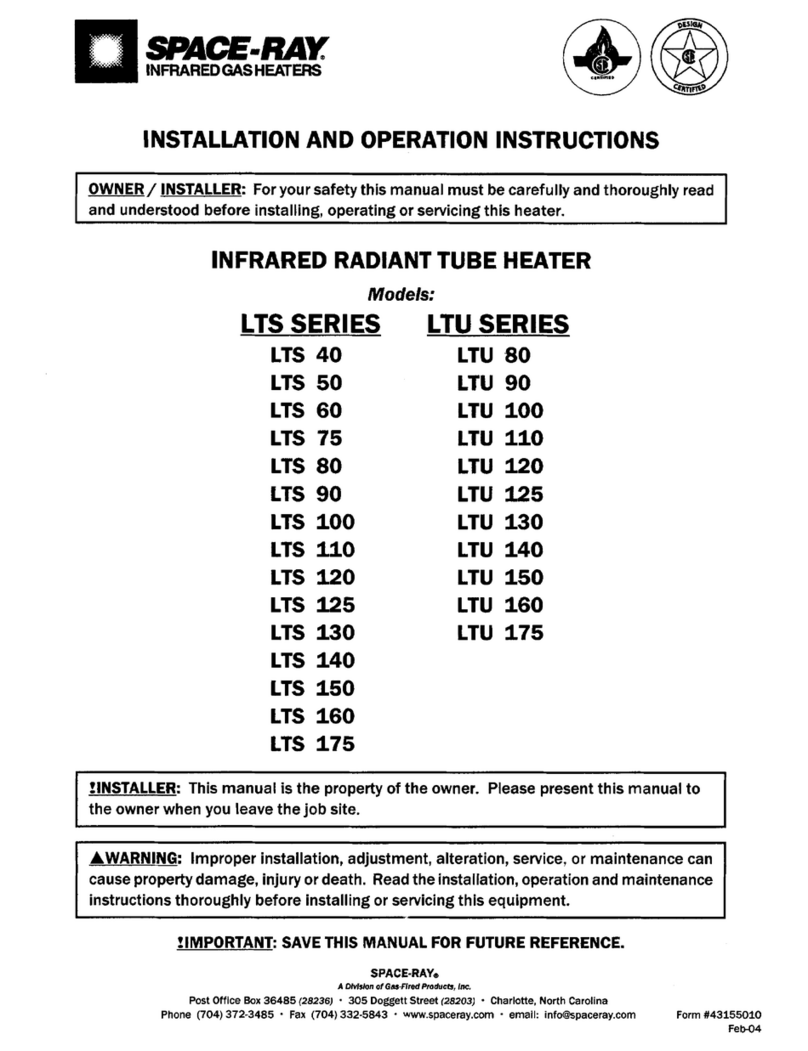
Space-Ray
Space-Ray LTS 100 Installation and operation instructions
